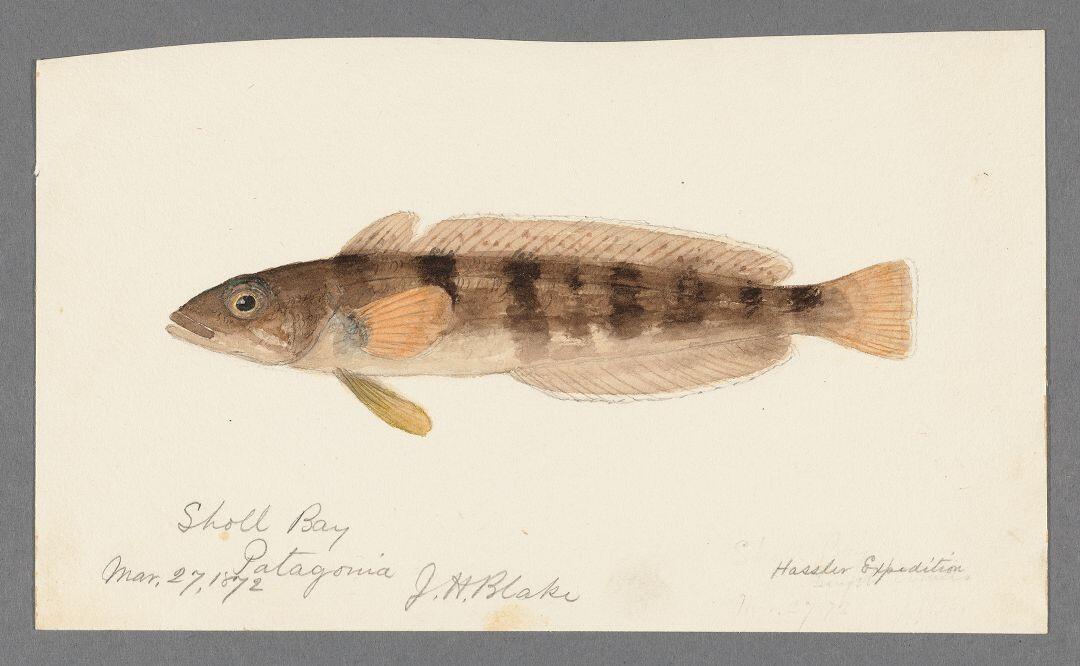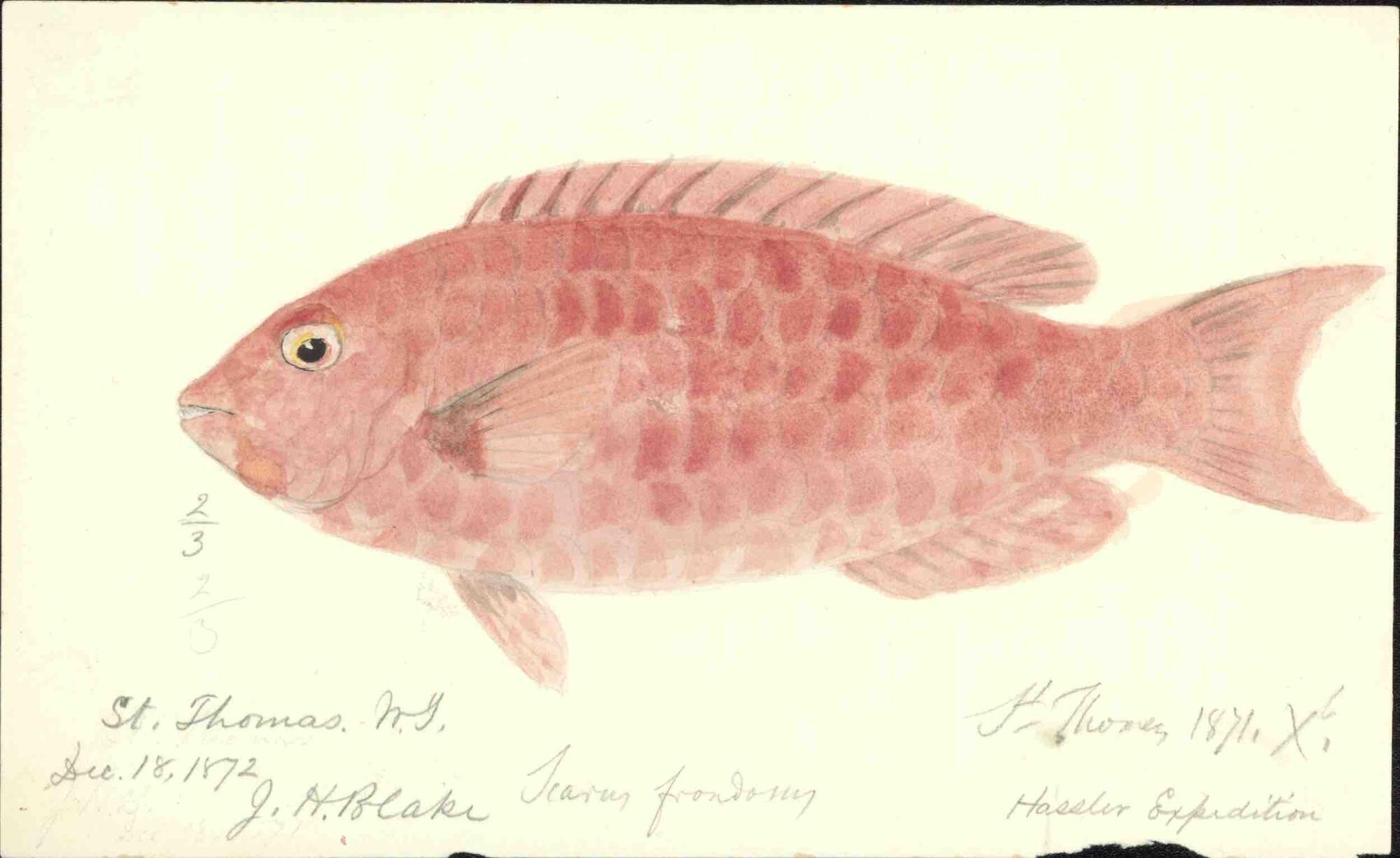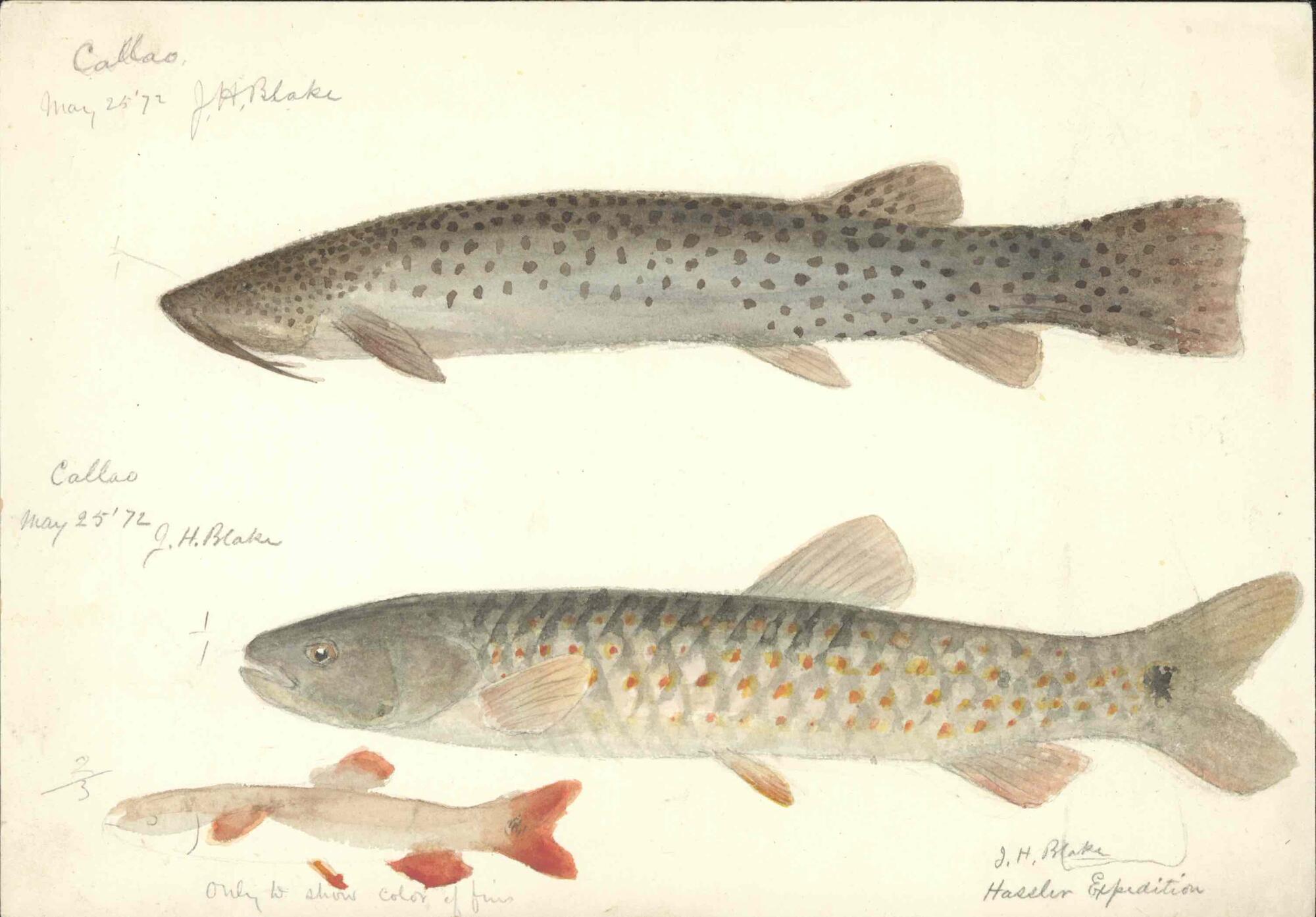By Robert Young, Special Collections Librarian
 Best known as the Hassler Expedition’s young zoological artist from Provincetown, Blake entered business in early life with his stepfather before deciding to enroll at Harvard’s Lawrence Scientific School in 1864 to study natural history.
Best known as the Hassler Expedition’s young zoological artist from Provincetown, Blake entered business in early life with his stepfather before deciding to enroll at Harvard’s Lawrence Scientific School in 1864 to study natural history.
Blake was hired as a Museum of Comparative Zoology student assistant three years later to help organize the Thayer Expedition collections, sorting the multitude of laboratory jars of Brazilian fishes, and was in fact paid out of the funds supplied by Nathaniel Thayer. In 1868, he was working in the MCZ Conchology Department, drawing the characteristic features of the soft parts of fresh-water mollusks.
By 1871 Blake, who married Lucinda Smith Critchett that summer, had begun arranging the mollusk collections when he was asked to join the “Deep-Sea Dredging Expedition,” the initial name of the Hassler trek, chiefly to draw specimens. Blake also supervised the fishing operations, with the expedition taking home about 30,000 fish specimens.


Blake’s 152-page scrapbook, one of the Ernst Mayr Library’s most prized holdings, is filled with clippings and manuscript leaves chronicling details of the Hassler Expedition. In later years, Blake was very protective of the history of the voyage on which his career had essentially begun and on occasion mailed off letters of correction when newspaper stories mangled its facts.
In September 1872, after the Hassler party returned to Cambridge overland from San Francisco, Blake resumed his duties systematically organizing the MCZ’s “alcoholic mollusca.” Three years later, Thayer’s funding for Blake’s salary would run out, and he left the MCZ.
With nine years of training at the MCZ, Blake had no difficulty resuming his career outside of Harvard, serving as artist for the Vineyard Sound Survey of the U.S. Fish Commission, the U.S. Geological Survey, and the Mississippi Geological Survey. In addition to illustrating many natural history publications, such as his drawings of fish collected during the 1891 Albatross Expedition to the Pacific in the MCZ Memoirs (v. 24, 1899) and his West Indies echinoderm drawings in the Carnegie Institution of Washington Publication (no. 281, 1919), he gave lectures throughout the country and helped found the Boston Malacological Club.
Blake never lost his affection for the MCZ, to which he bequeathed much of his artwork and personal collections, including numerous photographs, drawings, clippings and books about whales--his lifelong passion.

 Passing away in 1941 at age ninety-six in Somerville (at 81 College Avenue, the home of his son Dr. Allen Hanson Blake, two blocks from the historic West Somerville Branch Library near Davis Square), Blake, survived by Allen and his other son Ralph Julian Blake, was buried in Mount Auburn Cemetery, also the final resting place of many of his MCZ colleagues.
Passing away in 1941 at age ninety-six in Somerville (at 81 College Avenue, the home of his son Dr. Allen Hanson Blake, two blocks from the historic West Somerville Branch Library near Davis Square), Blake, survived by Allen and his other son Ralph Julian Blake, was buried in Mount Auburn Cemetery, also the final resting place of many of his MCZ colleagues.


